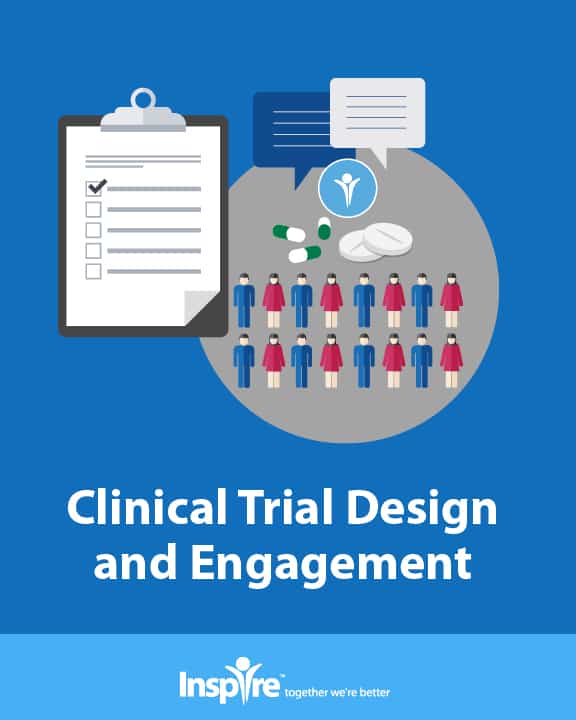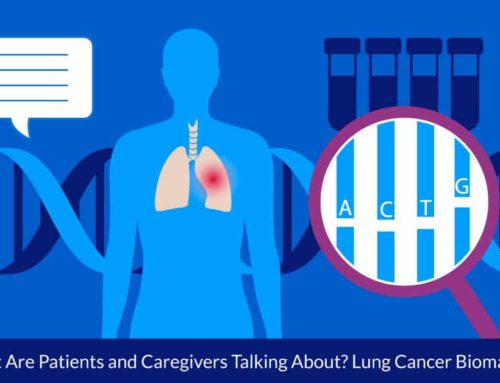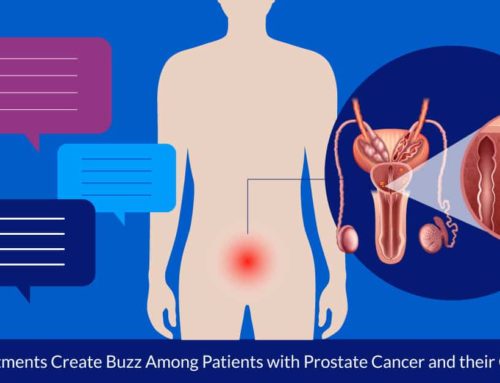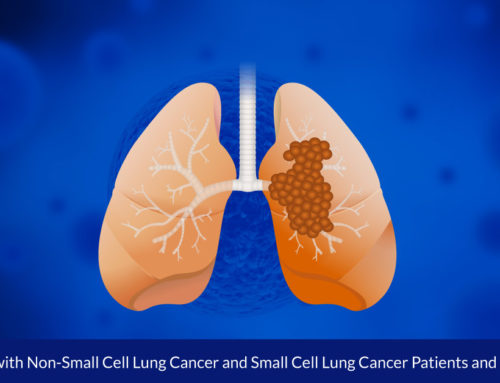Hacking clinical trials: Two awareness and protocol strategies invented by patients and caregivers that work

By Kathleen Hoffman, PhD
Patients with life-threatening diseases aren’t waiting for someone to make participating in clinical trials easier for them. They are breaking down the barriers themselves. Two of these innovative methods were described at a March 18 Clinical Trials Transformation Initiative (CITI)-FDA event, “Enhancing the incorporation of the patient perspective in clinical trials.”1
Breaking barriers to clinical trial awareness
In 2012, Tom Marsilje and his team from Novartis presented a cancer drug he had co-invented at the annual American Society of Clinical Oncology (ASCO) Conference. He also learned he had Stage IV colorectal cancer.2
Finding himself in the cohort of patients with a 5-year survival rate of 14 percent, Marsilje looked for a clinical trial he could join on clinicaltrials.gov.1 Yet Marsilje described his first experience with clinicaltrials.gov in his blog, Adventures in living terminally optimistic, like this: “There are numerous reasons behind the low participation rate [in clinical trials] but I firmly believe one of them is how difficult it is for the average patient to use clinicaltrials.gov to find potential trials.”3
Soon after, Marsilje became a member of multiple online communities, not only research but also patient communities, including the Fight Colorectal Cancer support group on Inspire. In a commentary he wrote for The Philadelphia Inquirer, Marsilje said, “Throughout the cancer world, patients are currently living with hope – in research or otherwise. Without hope, none of us…would truly be alive.” 4 That hope led Marsilje to create and share a tool that makes searching for clinical trials much easier for non-scientists.
Nancy Roche, Fight Colorectal Cancer founder, spoke about the tool her friend created on March 18 at the CITI-FDA event. While Marsilje passed away in 2017, she said Marsilje’s work “shows what one person can do when they look at different ways to partner and are willing to pass things along and not hold on too tightly to them.”1
For Marsilje and many other colorectal cancer patients, there is a problem. Most patients with colorectal cancer have micro-satellite stable tumors (MMS). MMS tumors don’t respond well to single agent immunotherapy and Marsilje was looking for clinical trials for MSS tumors.1
Marsilje downloaded everything from clinicaltrials.gov and then every week he would parse through the massive import looking for particular types of trials in immunotherapy, storing the results on a spreadsheet. Marsije wrote, “I…began to develop a list of trials I wanted to keep an eye on. The list was a mixture of immunotherapy trials that accepted MSS-CRC patients as well as Phase 2 or 3 trials (of any type of novel therapy) directed towards treating CRC. I added to it as new trials were announced – my list steadily grew…”3
But he didn’t stop there. Marsilje shared his spreadsheet among all the colorectal cancer online organizations he could. Then, with the help of fellow patient advocate Maria Cecilia Antunez who developed an app and Jana Downing, who created a simple web page to house the app, the spreadsheet app went online. 1,3
But even that wasn’t enough. Marsilje approached Roche with the idea of developing an online system to maintain his database on the Fight Colorectal Cancer site. Convincing FlatIron, a software start-up, to write the software, Marsilje made his dream a reality. By 2016, Fight Colorectal Cancer unveiled, “Late Stage MSS-CRC Trial Finder: A curated list powered by patients. Marsilje wrote in his blog, “Today an activist dream of mine all comes together on the Fight Colorectal Cancer website… all starting from a simple spreadsheet of trials I was interested in as a patient-scientist myself…”3
“Today, it takes eight people to do what Tom could do alone,” Roche stated.1 Marsilje’s patient-powered portal lives on. Marsilje hoped that his clinical trial finder could be used by many people to find clinical trials in immunotherapy, “an area of trials that are not easy to find through clinicaltrials.gov searching – but an area of clinical trials I know many fellow patients are also very interested in exploring!” Marsilje wrote, “On a broader level, there is nothing ‘CRC-specific’ about the curation methodology, I would love for it to spread to other cancer types via appropriate advocates.”3 This potential remains.
Protocols that flip the burden
At the same CITI-FDA event, Donna Appell, founder of the Hermansky-Pudlak Syndrome Network, described a strategy to make clinical trials more accessible: Bring the researchers to a ready source of eligible patients. 1
Hermansky-Pudlak Syndrome (HPS) is a rare genetic disorder causing albinism, legal blindness, Crohn’s disease, pulmonary fibrosis and platelet dysfunction. It is fatal to people in their 30s and 40s. Appell started the Network over 20 years ago to find a cure for her daughter who was diagnosed with HPS.1
HPS is an autosomal recessive disorder, meaning both parents must be carriers of the abnormal gene. People with HPS are found worldwide but there is a high prevalence of HPS in Puerto Rico and with people of Puerto Rican descent (due to the founder effect). Much of Appell’s work has been in Puerto Rico.5
Appell’s expertise in HPS as a caregiver and organizer led the NIH to select her as the primary recruiter for two NIH trials. Although the first small trial went surprisingly well, recruitment for the second trial, requiring 40 individuals with HPS, took three years. Appell described learning a great deal during that experience: “The barriers to research are many…Besides not knowing the research opportunities, it takes 7 years to get diagnosis with our disease.”1
Additionally, disability hampers recruitment. “Transportation for our organization becomes a major issue because they don’t drive,” because of blindness, she said. This means that “they have to take a day off from work and so does their ride, their family member.” Travel is also encumbered by pulmonary fibrosis, which requires those with HPS to travel with oxygen. Their multi-system comorbidities also decrease their ability to travel and increase their economic instability.1
Recruitment is also made difficult because of language barriers and cultural values. Appell is well-acquainted with Puerto Rican beliefs, “Culturally, they hide their disease,” she said, “Spiritually, many of them told me that God will cure them.” 1
Slowed by these hurdles, Appell believed that HPS research needed new thinking. “Instead of engaging the patients, we decided to flip it and engage the researchers. So we invited them to come to the people, rather than asking the people to engage with them. We invited our researchers to draw blood, obtain specimens, at our conference.”1
The concept, bringing the smaller group of healthy scientists to the larger group of patients who have many personal challenges, makes sense. At the first conference, only one academic center participated, but the next year, five academic centers IRBs gave approval for researchers to go to the patients.
“We had a room of five informed consenting tables managing the language barrier and the legal blindness,” Appell said. Moreover, the HPS Network had previously prepared their members, teaching them the language of clinical trials and obtaining details about the members’ genotypes and symptom expressions. The conference location was prepared with large print signage, material in English and Spanish and translators.1
At the conference, researchers wanted stem cells drawn, so Appell and the Network accommodated them. “We had a time limit so the specimens could make it back to the lab quickly; they gave us 2 hours. We handled 38 individuals, drew 96 tubes of blood, got 4 stool samples and only had 2 people faint and we did that in an hour and 55 minutes.”1
The HPS network has contact information from their members, as well as information on their interest in being involved in research. Smiling at the audience, Appell said, “Our program was called ‘We Are Drawn Together.’”1
Addressing the need
Making these innovative hacks not the exception but the norm could improve recruitment and retention of clinical trials. Yet as FDA commissioner Scott Gottlieb said as he wraps up his term at FDA, “Unfortunately, we’ve seen a continued reluctance to adopt innovative approaches among sponsors and clinical research organizations.” 6
These efforts by patients and caregivers to innovate and move research forward may be disruptive, but they also work. As both of these examples demonstrate, patients and caregivers can’t wait. As Gottlieb’s statement continued, “We appreciate that scientific and technical complexity is a real and ongoing challenge, but industry and academia also need to invest in and leverage these approaches and develop new incentives that reward collaboration and data sharing across the clinical research enterprise.”6
Inspire offers a trusted community to patients and caregivers. Our goal with this blog, this website and our content is to provide the life science industry access to the true, authentic patient voice. In so doing, we support faithful operationalization of patient-centricity. Take a look at our case studies, eBooks and news outlet coverage.
References:
11.Clinical Trials Transformation Initiative. (Producer). (March 18, 2019) Enhancing the incorporation of the patient perspective in clinical trials. webcast [Video Webcast] Retrieved from http://fda.yorkcast.com/webcast/Play/d27bdc602ae74a1e9fbe66e7a405f5df1d
2 Robbins, R. (2016, September 26). A cancer researcher races to find a cure — for his own incurable cancer. STAT. Retrieved from https://www.statnews.com/2016/09/26/colon-cancer-vaccine-tom-marsilje/
3 Marsilje, T. (2017, May, 17). A Patient Powered Curated MSS-CRC Trial Finder. [Blog post]. Adventures In Living Terminally Optimistic. Retrieved from https://adventuresinlivingterminallyoptimistic.com/2017/05/16/a-patient-powered-curated-mss-crc-trial-finder/
4 Marsilje, T. (2016, August 31). Stage IV chemo life filled with hope. The Philadelphia Inquirer. Retrieved from https://www.philly.com/philly/blogs/diagnosis-cancer/Stage-IV-chemo.html
5 What is HSP? (n.d.). Hermansky-Pudlak Syndrome Network, Inc. Retrieved from https://www.hpsnetwork.org/hps-information/what-is-hps/
6 Carroll, J. (2019, March 15). Scott Gottlieb to biopharma: You wanted us to help modernize R&D, now go out and do it. Endpoints News. Retrieved from https://endpts.com/scott-gottlieb-to-biopharma-you-wanted-us-to-help-modernize-rd-now-go-out-and-do-it/






